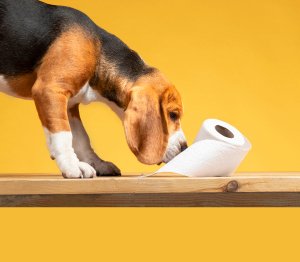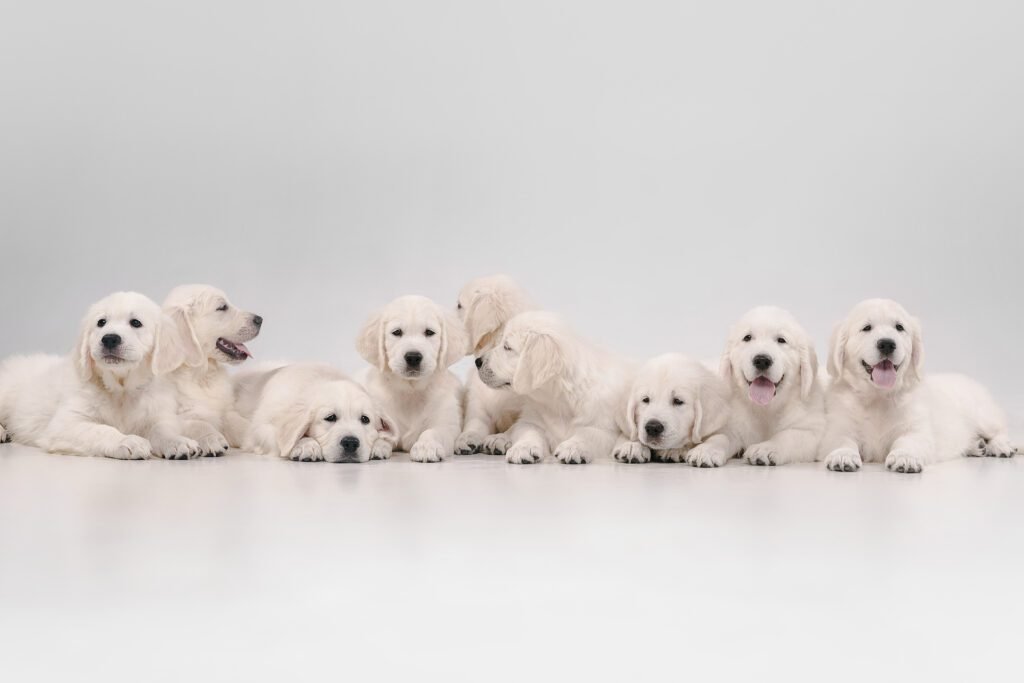Blog
Transform your pet care routine with us – where smart meets ultimate convenience!
Related posts

Unlocking the Secrets of Potty Training Methods: A Friendly Guide for Pet Parents
Author
Published
Related posts

Unlocking the Secrets of Potty Training Methods: A Friendly Guide for Pet Parents
Author
Published
Training a new puppy to use a potty area often seems like a daunting task, but with the right guidance and methods, it becomes a manageable experience. Understanding the nuances of different potty training techniques is critical to fostering a positive and successful routine for your furry friend. In this guide, we will explore effective potty training methods, provide a comprehensive schedule for training puppies, and share training tips that focus on positive reinforcement.
Understanding Potty Training Basics
The importance of consistency
Consistency is the cornerstone of successful training in the use of potty area cuboid pro. Creating a routine helps your puppy understand what to expect and when. Start taking your puppy out at the same times every day – first thing in the morning, after meals and before bed. This predictable schedule helps strengthen the relationship between going out and doing their business. In addition, use the same potty place outdoors every time. The familiar smell will guide your puppy and indicate that it is time to go. Consistent commands and praise is also crucial. Use a certain word or phrase when your puppy starts using the potty and immediately follow up with praise or positive reinforcement therapy. This repetition builds a strong connection between command and action.
The importance of timing
Timing is everything when you want effective training in the use of cuboid potty. Puppies have small bladders and a high percentage of metabolism, which means they need frequent breaks from using potty area cuboid. As a rule, plan to take out your puppy every two hours, gradually extending the time as it grows. It is also necessary to schedule bath breaks after doing certain activities such as eating, drinking, playing and waking up from naps. These are the main moments when the puppy will likely need to relieve himself. Observing your puppy's behavior can also help—if they start sniffing or spinning, it may be time.

Positive Reinforcement Techniques
Positive reinforcement is an essential component of puppy potty training. This approach involves rewarding your puppy immediately after he has successfully used the potty area. The reward must be made immediate and consistent so that your puppy associates the act of going to the potty area with positive results. Avoid late responses, as puppies may not associate the reward with the desired behavior. Moreover, use a playful and encouraging tone to enhance the achievement. Over time, your puppy will begin to understand that going out leads to positive experiences.
Challenges and Solutions
Managing Indoor Accidents
Dealing with internal accidents becomes a challenge in training a puppy to use the bathroom. The solution is to deal with these situations calmly. When an accident occurs, avoid scolding your puppy as this can lead to anxiety and confusion. Alternatively, using Cuboid Pro that features an artificial turf cushion and a distinctive drainage system, which provides you with comfort and cleanliness at the same time.If accidents persist, it may be worth evaluating the potty usage schedule or consulting with a veterinarian to rule out medical problems.
Consulting a Veterinarian
If your puppy continues to have frequent accidents despite ongoing potty area training efforts, consulting your veterinarian may be a necessary step. Ongoing internal accidents can sometimes be a sign of underlying health problems, such as urinary tract infections or digestive problems, that require professional attention. Your veterinarian can conduct a thorough examination to rule out medical causes and provide guidance on any necessary treatments. And if behavioral problems contribute to the problem, your veterinarian may suggest working with a professional trainer.
Advanced Potty Training Strategies
Age-Specific Training Schedules
Implementing age-specific training schedules is a strategic way to align potty breaks with your puppy's developmental needs. At eight weeks, puppies need frequent breaks, approximately every two hours, due to the microbladder. As it grows, you can gradually extend this time. By 14 weeks, the interval of three to four hours is usually changeable, and at 16 weeks, this extends to four to five hours. By 20 weeks, many puppies can handle a gap of six to seven hours between bath breaks. After six months, most of them can take control for eight hours during the day. However, active play or feeding times may require more frequent outings. Customizing the potty training schedule according to your puppy's age helps prevent accidents and promotes good habits. This age-specific approach respects your puppy's physical abilities and promotes a more easy transition to adult potty usage habits.
Tools for Effective Training
Using the right tools can boost the efficiency of your potty training efforts.you can use Cuboid Pro by Petmin This smart pet potty is designed for indoor and outdoor use. It features an artificial grass pad for convenience and easy cleaning, a durable plastic tray, and an efficient drainage system.
Acknowledgment and Disclaimer
The information provided by Petmind is intended for educational and informational purposes only and should not be considered as medical advice or a substitute for professional veterinary care. Petmind does not provide any form of diagnosis, treatment, or medical recommendations for pets.
If your pet is experiencing any medical issues or health concerns, it is essential to consult a licensed veterinarian immediately. Petmind encourages all pet owners to seek professional advice and prioritize their pet’s well-being through proper veterinary care.
By using the information provided by Petmind, you acknowledge and agree that Petmind is not liable for any actions taken based on the content shared. Always consult a veterinarian for accurate diagnosis and appropriate treatment for your pet’s health needs.
Still have a questions?
If you have any questions, please contact us. Our team is here to provide support.

Understanding Canine Parvovirus: Symptoms, Prevention, and Treatment
Author
Published
Keeping your dog healthy and safe from diseases is a top priority for any pet owner, and understanding the basics of parvo prevention is an essential part of pet care. Parvovirus, or CPV-2, is a highly contagious virus that poses a significant threat, especially to puppies. This document will guide you through basic vaccination tips and preventive measures to protect your beloved pet from this dangerous disease.
Canine Parvovirus CPV-2
Parvovirus type 2 (CPV-2) is a highly contagious virus, infecting puppies. Discovered in the late seventies of the twentieth century, CPV-2 quickly spread throughout the world, causing the disease to spread widely. The virus targets rapidly dividing cells, leading to significant damage to the dog's white blood cells and digestive system. In puppies, CPV-2 can affect the heart muscle, cause myocarditis. CPV-2 is closely related to the feline panleukopenia virus. Despite the development of effective vaccines that have reduced its occurrence, CPV-2 remains an ongoing threat due to its ability to survive for long periods in the environment.

How CPV-2 Spreads
CPV-2 spreads rapidly, primarily through direct contact with infected or fecal infection. The virus can also be transmitted indirectly, as it can persist in the environment on surfaces such as floors, dinnerware and even on clothing and hands that have come into contact with infected people. This flexibility allows CPV-2 to remain infectious for several months, making thorough disinfection critical to prevent its spread. The virus' ability to survive under different conditions means that any area frequented, such as parks and shelters, can harbor the virus. Incompletely vaccinated puppies are especially at risk.
Vaccination and maintaining strict hygiene practices, such as regularly cleaning and disinfecting living quarters and equipment, is essential.
To prevent CPV-2 transmission, owners should avoid exposing small or unvaccinated dogs to high-risk areas. Vaccination and maintaining strict hygiene practices, such as regularly cleaning and disinfecting living quarters and equipment, is essential. Cuboid Pro smart potty product helps you achieve cleanliness for your furry friend, as it has an efficient drainage system, which ensures hygiene.
Recognizing Symptoms of Parvovirus
Early Warning Signs
Observing early warning signs of the virus is critical to ensure timely veterinary intervention. Initial symptoms can be subtle, as they often manifest themselves in the form of lethargy and a noticeable lack of energy. Loss of appetite is another key indicator, as the puppy may refuse food and water, leading to rapid dehydration. As the virus progresses, it may develop more severe symptoms, including vomiting and diarrhea, which is often bloody. These gastrointestinal symptoms are especially alarming, as they can quickly lead to severe dehydration and puppy imbalance. Abdominal discomfort and bloating may also occur, which indicates the effect of the virus on the gastrointestinal tract. In addition, he may suffer from fever or, in some cases, hypothermia. Pet owners who notice any combination of these symptoms should seek immediate veterinary care.
Severe Complications
When left untreated, parvovirus can lead to serious complications that significantly endanger the puppy's health. One of the most serious issues is the rapid onset of dehydration due to constant vomiting and diarrhea, which can quickly become life-threatening. The virus also attacks the bone marrow and lymph nodes, which leads to a decrease in the number of white blood cells. This decrease weakens the immune system, making it more susceptible to secondary bacterial infections. Damage to the lining of the intestine can allow bacteria from the intestine to enter the bloodstream, which can lead to septicemia, an acute blood infection. In puppies, there is an additional risk of myocarditis, which is inflammation of the heart muscle, which can cause arrhythmias and sudden death. Given these severe complications, prompt veterinary care is crucial. Prompt treatment significantly increases survival rates, underscoring the importance of recognizing symptoms early and seeking help.
Effective Parvo Prevention
Essential Dog Vaccination Tips
Vaccination is the cornerstone of parvo prevention and is vital to keeping your furry friend healthy. Puppies should start a vaccination schedule between six and eight weeks of age. It is crucial that they receive booster shots. "Ask your veterinarian about the vaccination schedule" This timeline ensures the development of a strong immune response to CPV-2. The adult also requires regular booster vaccines – usually one year after the initial series, These vaccines are often part of a combination syringe that protects against multiple diseases, including tuberculosis and adenovirus. Owners should keep their vaccination records and consult with veterinarians to design the schedule based on their pet's lifestyle and health status. Avoid high-risk environments for puppies until they are fully vaccinated.
Hygiene and Environmental Safety
Maintaining proper hygiene and ensuring environmental safety are crucial components of parvo prevention. The practical solution to achieve these hygiene standards is the Cuboid Pro, a smart pet potty designed for indoor and outdoor use. Cuboid Pro features an artificial grass cushion that provides pet comfort while ensuring easy cleaning. The durable plastic tray along with an efficient drainage system helps control waste, allowing for easier management and reduced exposure to CPV-2.
FAQ
What is parvo in dogs?
Parvovirus, commonly known as parvo, is a highly contagious viral disease that affects dogs. It primarily impacts the gastrointestinal tract, leading to severe symptoms such as vomiting, diarrhea, and dehydration. Puppies and unvaccinated dogs are particularly at risk.
How can I prevent my dog from getting parvo?
The most effective way to prevent parvo is through vaccination. Puppies should receive their first vaccine between six and eight weeks of age additionally, maintaining proper hygiene and avoiding high-risk areas where the virus may be present can help protect your dog.
What are the treatment options for a dog infected with parvo?
Immediate veterinary care is essential for dogs infected with parvo. Treatment typically includes hospitalization, intravenous fluids to combat dehydration, medication to control vomiting and diarrhea, and antibiotics to prevent secondary infections. Early intervention is crucial for increasing the chances of recovery.
Still have a questions?
If you have any questions, please contact us. Our team is here to provide support.




